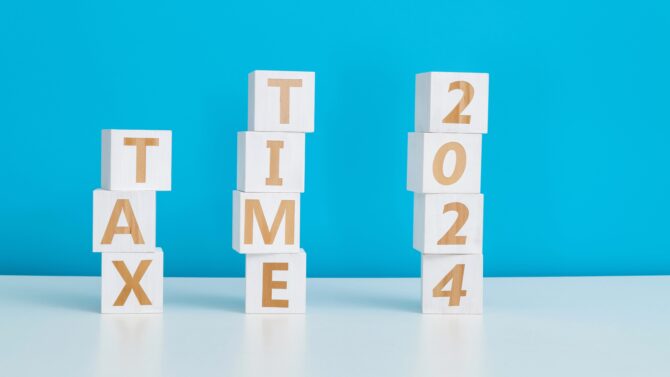
Running out of money is often cited as one of the most significant concerns of a retiree. It can be difficult to make the mental transition from saver to spender when there is no longer a regular paycheck coming in. Then, add in occasional market volatility (I’m looking at you 2020!) and the stress can be overwhelming. To provide some sense of control and peace of mind, a meticulous and comprehensive retirement income planning strategy becomes essential. An ideal plan should address both the saving and the spending phases to help weather the storms.
Understand the Different Phases of a Retirement Income Planning
It’s important to recognize that a comprehensive retirement plan encompasses very distinct phases with different strategies, tactics, and measures of success. For instance, in the accumulating phase, you are generally successful by saving as much as you can, starting as early as you can AND making smart decisions with your money. Many investors are successful in this accumulation stage but drop the ball at the 10-yard line and don’t give much thought as to how they will spend their assets in the most efficient manner possible.
But after retirement, the key to success is having a plan to spend down your accumulated assets. To further complicate matters, spending is usually uneven throughout retirement. The first few years of retirement typically produce increased spending. These years are often filled with travel and entertainment and big purchases like a second home. Spending then tends to wane for several years before increasing again due to medical expenses. Given that cash flows and spending are not consistent year to year, it is critical to coordinate your income and to minimize the tax drain to preserve as much of your nest egg as possible. By focusing on these two elements, you will increase the chances that you will not run out of money and maximize the legacy that is left for future generations.
Let’s explore how to build a comprehensive retirement plan that addresses both the accumulation and the spend down phase.
Determine How Much You Need
First, it’s important to determine the lifestyle you would like to have and annual costs in dollars and cents associated. What does your lifestyle in retirement cost? What are your sources of income? Do you have enough saved up? Ideally, an unbiased financial advisor that focuses on planning can run the numbers and help you weigh outcomes. As an example, at ML&R, we can create a retirement projection based on probability analysis to determine that you have the financial capacity to fund a particular dollar amount of lifestyle. Then, we can recommend an asset allocation to take the least amount of equity risk to accomplish your desired retirement lifestyle spending.
Once you have a good foundational plan to determine what level of spending your portfolio can support, the next step is to maximize your outcomes by minimizing taxes over your lifetime through smart spending of your assets.
Know Your Sources of Cash Flow
Tapping various income sources and investment accounts can lead to very different tax consequences. For example, if you need $10,000 from your investment portfolio in retirement, do you know the best place to draw the funds? Do you tap your taxable brokerage account and incur gains? Or, perhaps you should distribute funds from your Roth IRA account since those funds are tax-exempt. Then again, if you find yourself in a year with very little income and in a low tax bracket, perhaps it’s wise to actually incur ordinary income from a traditional IRA account and pay taxes now at a lower rate. As you can see, a simple question of accessing a relatively small sum can lead to very different tax costs. Many of these decisions made over several decades can really add up and lead to significant long-term impacts.
Although you may not receive a regular paycheck in retirement, you will still have sources of income that create tax consequences such as capital gains, IRA distributions, and Social Security. To plan for cash flows in the most tax efficient manner possible, one should typically start with cash sources that are “forced” income- payments such as Social Security, required minimum distributions (RMDs), and pensions. Next, project taxable income and dividends from any taxable investment accounts and make sure those are paid out in cash as opposed to reinvesting. You can also use rebalancing opportunities- or the process by which you systemically trim off some of the gains in your winners- to fund additional cash. Then, if you still need additional dollars to fund your lifestyle, determine your next lowest tax-cost option to fund the difference. You may consider distributions from Roth IRAs if you are trying to stay within a certain tax bracket. Or, depending on your tax situation, it may also be smart to take taxable distributions from your traditional IRA accounts if you can take distributions at a lower rate and reduce the size of your projected RMDs later in life.
Manage the Blackout Period
There is a good opportunity to further reduce and manage taxes if you encounter years in which income is down or what is often referred to as the “blackout period.” For many retirees, this is the time between the last year you report working income and the first year you report income from Required Minimum Distributions (RMDs) and/or Social Security. For reference, Required Minimum Distributions kick in at 72 and most retirees can maximize their Social Security benefits by deferring benefits until age 70. So, for someone who retires at age 60, that could leave 10-12 prime years to manage and reduce taxes before RMDs and Social Security payments begin.
If you find yourself in lower tax brackets during this gap or blackout period, consider realizing as much deferred ordinary income as you can to “fill up” your lower tax bracket buckets. This blackout period is also an excellent time to convert some of your IRAs into Roth IRAs. Roth conversions are particularly smart planning strategies as you can report the converted income at lower tax rates. Furthermore, you lower your future taxable income since Roth IRAs are not subject to RMDs.
Continually revisiting your plan and looking at planning opportunities beyond just the current year is the key to success when planning a cash flow and tax minimization strategy for retirement. Although doing so can be complex with many factors to consider, the team of trusted advisors here at ML&R Wealth Management are well equipped to help. Please contact us if you have questions about this or any other topic.
Want more great articles on investment topics? Subscribe to our monthly Wealth Management newsletter for relevant articles about investment topics written by our advisors. Click here to sign up!



